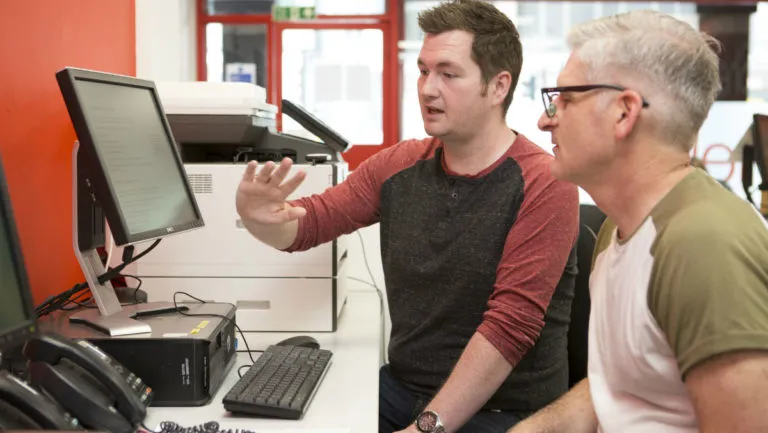Health and home: how poor living conditions endanger wellbeing
Published: by Guest blog

This article is part of a series, ‘Shelter defending the right to a home’, that appears on theguardian.com
A place to call home – it’s a basic human right. Yet not everybody has one, and even families that do can find their health suffering from living in cramped and dirty conditions. That’s why Shelter is committed to defending everyone’s right to a safe home.
By any measure, a two-bedroom flat is hardly the ideal place to raise a family of five. And yet, since 2016, Rahman, his wife and their three children have been living in just such a space, squeezed together in temporary accommodation on the fourth floor of a converted office building.
The cramped conditions are especially challenging because Rahman has terminal lung cancer. When the lift kept breaking last year, he had to be carried up to the flat. Sleeping arrangements are difficult: he needs his own room if he’s to stand any chance of getting the rest he needs. That leaves his 12-year-old daughter in the second bedroom, and Rahman’s wife, 10-year-old son and baby daughter, who’s two, sharing a bed in the living room.
His son has autism, and his behaviour is hard to manage in the limited space. He bites and hits his younger sister, and Rahman worries her behaviour is being affected in turn. “Being in this accommodation makes it worse for me mentally,” he says. “I suffer from anxiety and I’m in pain. Sometimes I can’t sleep at all, if there’s any noise.”

Shelter is working with Rahman’s family to try to get them rehoused on the grounds of exceptional circumstances. The charity is seeing increasing numbers of families living in similar conditions, struggling to cope in overcrowded or rundown housing that harms their physical and mental health, makes existing problems worse, and even stunts children’s development.
It’s clear that things have reached crisis point, with so many families now denied the basic right to a safe home. Shelter has launched a new strategy in response to the crisis, and will be delivering bold campaigns and innovative services to ensure families like Rahman’s have a suitable home in which to settle and thrive. A key focus will be campaigning for better social housing availability, so that fewer families end up in unsuitable temporary accommodation. The charity will also be fighting for specific housing rights for children, who are disproportionately affected by homelessness. And its hubs in local communities will provide family-friendly spaces reflecting the changing pressures of the housing crisis.
Alongside that, the charity will continue to help people deal with the physical and emotional impact of housing problems, whether that’s getting them out of damp, mould-ridden properties that are causing their children breathing problems or linking them up with health-related services if they’ve been offered accommodation in a new area.
“We see lots of people who are experiencing anxiety and depression simply because of the distress they’re suffering due to homelessness or poor housing,” says Connie Cullen, Shelter’s hub manager in London. “We also see a lot of children experiencing anxiety because of what’s happening to their parents.”
That can have a lifelong effect, says Tim Elwell-Sutton, assistant director focusing on healthy lives at the Health Foundation, because stress, anxiety and depression affect how children do at school. “Educational attainment has one of the biggest impacts on your long-term health,” he says. “Skills and qualifications are key assets young people need to secure a healthy future.”

Forming partnerships is a key part of Shelter’s new strategy, as the charity recognises that collaboration will be critical to achieving change. Partnerships with health services will be a growing focus, following the success of the Advice on Prescription pilot service in Newcastle. This service, which was based in three GP practices in deprived areas of the city, enabled doctors to refer patients with housing problems to a Shelter adviser, who spent one day a week in each surgery.
The service was born after workers in the city’s main service noticed the huge number of people coming in with health conditions, explains Shelter North East hub manager Tracy Guy: “We wanted to think about more preventative work and getting to those people sooner – before they came to us in crisis.”
Doctors gave patients a simple referral form prescribing advice from Shelter, with which they could go straight to the reception desk to book an appointment. That meant they never had to worry about the stigma of needing housing advice, and were much more likely to see the Shelter worker than they would have been to visit an advice service in the city centre. “We had only a tiny amount of people who didn’t make that appointment,” Guy says. Attendance rates for arranged appointments were higher than rates for GPs’ appointments.
Over a year and a half, the Shelter adviser helped almost 300 patients with problems such as unsuitable housing, debt, and difficulties with benefits or paying rent. Some 45% said those issues were having a large impact on their physical health; 47% felt their mental health was affected.
“We were seeing people with anxiety, low-level depression, sleeping issues, where actually, whatever the doctor did in terms of referring them to talking therapies, or medication, it made no difference – because they weren’t able to deal with the social reasons behind these patients’ problems,” Guy says. The Shelter adviser supported patients to retain accommodation, address debt, or make successful benefit claims or appeals. “We could see a very clear path of people feeling better, with their wellbeing improved,” Guy says.

Shelter will also build on its existing partnership work with hospitals. At the Birmingham children’s hospital, Shelter’s lottery-funded WELLcome Home service, delivered in partnership with Mind (through the “Help through Crisis” programme), works with families to help children who’ve been in hospital with complex medical needs return home. They may have an illness that needs long-term care, like cancer, have had organ transplants that have run into difficulties, or been in car accidents.
“It could be the child is fit to leave hospital but, because of their medical needs, the house they go back to isn’t necessarily fit for them,” explains Shelter’s hub manager in the city, Vicky Hines. “The service might help the family get some home modifications done, or it might be about helping them secure a new home.”
The hospital loves WELLcome Home, Hines says, because it means its nurses are no longer having to spend precious time trying to sort out families’ housing so that children can get home. It also ensures they’re not staying in hospital longer than they need to, taking up much-needed beds.
The service currently helps around 40 families a year. It also has a peer mentor – somebody with personal experience of homelessness, who can sympathise with what families are going through and give wider support to them.
Ali’s* family was one of them. In June, thanks to months of work by Shelter securing him a suitable council property, he was finally able to bring the youngest of his three daughters home from hospital for good, more than two years after she was born prematurely at just 25 weeks. Before her birth, the family rented a two-bedroom house, but she has cerebral palsy and needs extra oxygen and overnight care, meaning a separate bedroom was essential. Her three-year-old sister has a muscle condition that affects her lungs, and is on a ventilator at night, so she also needed her own room.
Ali thinks it would have taken him much longer to get a property that was big enough without Shelter’s help. “We’re settled now,” he says. “We’re happy. It’s wonderful that we’re all in one place as a family.”
* Names have been changed to preserve anonymity